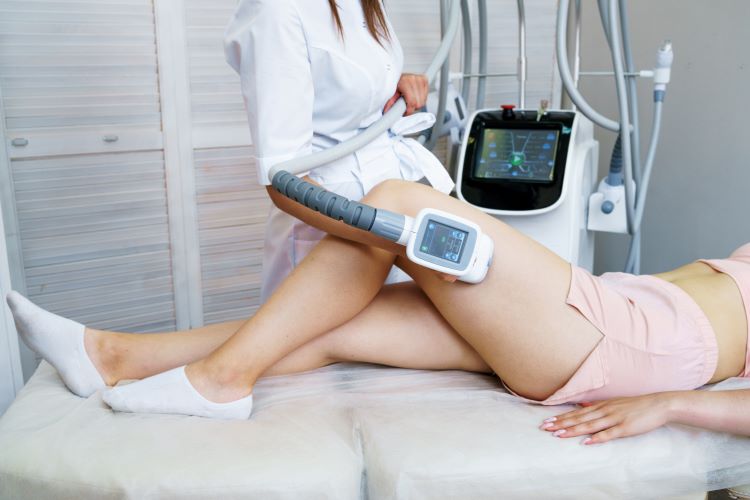Cryogenic Sculpting: The Cool New Frontier in Body Contouring
In the ever-evolving world of beauty and fitness, a frosty newcomer is making waves: cryogenic sculpting. This innovative technique harnesses the power of extreme cold to reshape the body, offering a non-invasive alternative to traditional fat reduction methods. As the beauty industry continues to push boundaries, cryogenic sculpting stands out as a cutting-edge approach that's capturing the attention of both professionals and consumers alike. By targeting stubborn fat deposits with precision-controlled cooling, this method promises to transform physiques without the need for surgery or downtime. But what exactly is cryogenic sculpting, and how does it fit into the broader landscape of body contouring treatments? Let's dive into the icy depths of this fascinating new frontier in aesthetic enhancement.

The treatment involves placing a specialized applicator on the target area, which then delivers precise cooling to the underlying fat layer. The surface skin and other tissues remain unharmed due to their higher resistance to cold. Over the following weeks and months, the body naturally processes and removes the affected fat cells, resulting in a more contoured appearance.
From Popsicles to Precision: The Evolution of Cryogenic Sculpting
The concept of using cold for fat reduction wasn’t born in a lab, but rather from an unexpected observation. In the early 2000s, researchers noticed that children who frequently ate popsicles developed dimples in their cheeks. This phenomenon, dubbed “popsicle panniculitis,” sparked the idea that cold could selectively affect fat cells.
Building on this discovery, scientists began developing a method to harness this effect for cosmetic purposes. After years of research and clinical trials, the first cryogenic sculpting device received FDA clearance in 2010. Since then, the technology has rapidly evolved, with newer generations of devices offering improved efficacy, shorter treatment times, and the ability to target multiple areas simultaneously.
Beyond the Freeze: The Treatment Experience
A typical cryogenic sculpting session lasts between 35 to 60 minutes, depending on the area being treated. Patients often report feeling intense cold for the first few minutes, followed by numbness. Many find the procedure comfortable enough to read, work on laptops, or even nap during treatment.
Post-treatment, the area may feel slightly sore or swollen, but these effects usually subside within a few days. Unlike more invasive procedures, cryogenic sculpting requires no downtime, allowing patients to return to their normal activities immediately after treatment.
Results begin to appear as early as three weeks post-treatment, with full effects typically visible after two to three months. Studies have shown an average fat reduction of 20-25% in the treated area, with some patients experiencing even more dramatic results.
The Cool Factor: Market Impact and Industry Trends
Since its introduction, cryogenic sculpting has experienced exponential growth in popularity. According to market research, the global cryolipolysis devices market is projected to reach $1.6 billion by 2025, growing at a CAGR of 15.8% from 2020 to 2025.
This surge in demand has led to increased competition among device manufacturers, driving innovation in the field. New developments include multi-applicator systems that can treat multiple areas simultaneously, enhanced cooling technologies for faster treatments, and improved applicator designs for better tissue contact and more uniform results.
The rise of cryogenic sculpting has also impacted the broader aesthetics industry. Traditional liposuction procedures have seen a decline in some markets as patients opt for non-invasive alternatives. This shift has prompted many plastic surgeons and dermatologists to incorporate cryogenic sculpting into their practice offerings.
Chilling Controversies and Safety Considerations
While cryogenic sculpting has gained widespread acceptance, it’s not without its controversies. Some critics argue that the long-term effects of fat cell destruction are not fully understood, and question whether the body’s natural fat distribution patterns might be permanently altered.
There have also been rare reports of a condition called paradoxical adipose hyperplasia, where the treated area experiences fat cell growth instead of reduction. While extremely uncommon (estimated to occur in less than 0.1% of treatments), this potential side effect has raised concerns among some practitioners and patients.
Safety studies have generally shown cryogenic sculpting to be well-tolerated with minimal risks when performed by trained professionals. However, as with any cosmetic procedure, patient selection is crucial. Those with certain medical conditions, such as cryoglobulinemia or cold agglutinin disease, are not suitable candidates for the treatment.
As the field continues to evolve, ongoing research and long-term follow-up studies will be essential to fully understand the safety profile and efficacy of cryogenic sculpting.
The Future of Fat Freezing: What’s Next for Cryogenic Sculpting?
As technology advances, the future of cryogenic sculpting looks promising. Researchers are exploring ways to enhance the treatment’s effectiveness, such as combining cryolipolysis with other modalities like radiofrequency or ultrasound to improve skin tightening and overall results.
There’s also growing interest in using cryogenic techniques for non-aesthetic applications, such as treating benign fat tumors or managing certain metabolic disorders. These potential medical uses could expand the scope of cryogenic technology beyond the realm of cosmetic enhancement.
As the beauty and fitness industry continues to embrace technological innovations, cryogenic sculpting stands out as a cool contender in the quest for the perfect physique. With its non-invasive nature, proven efficacy, and ongoing advancements, this icy treatment is likely to remain a hot topic in body contouring for years to come.





